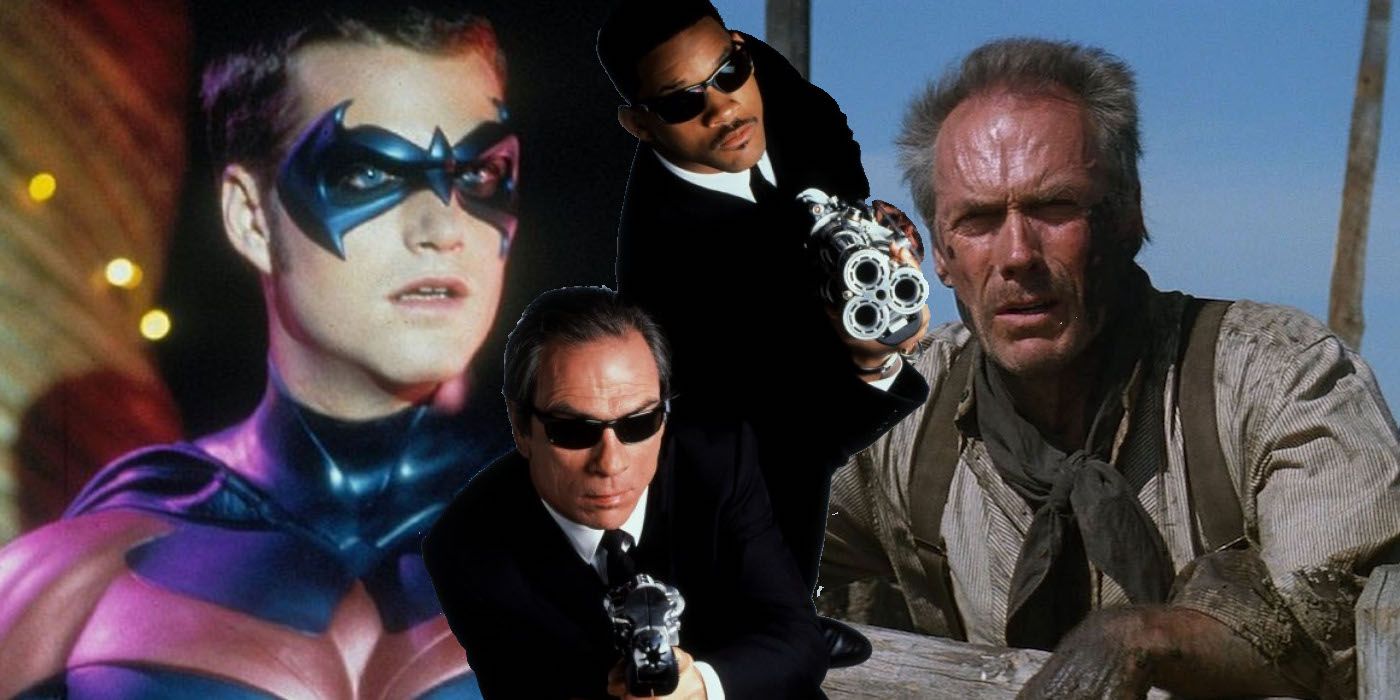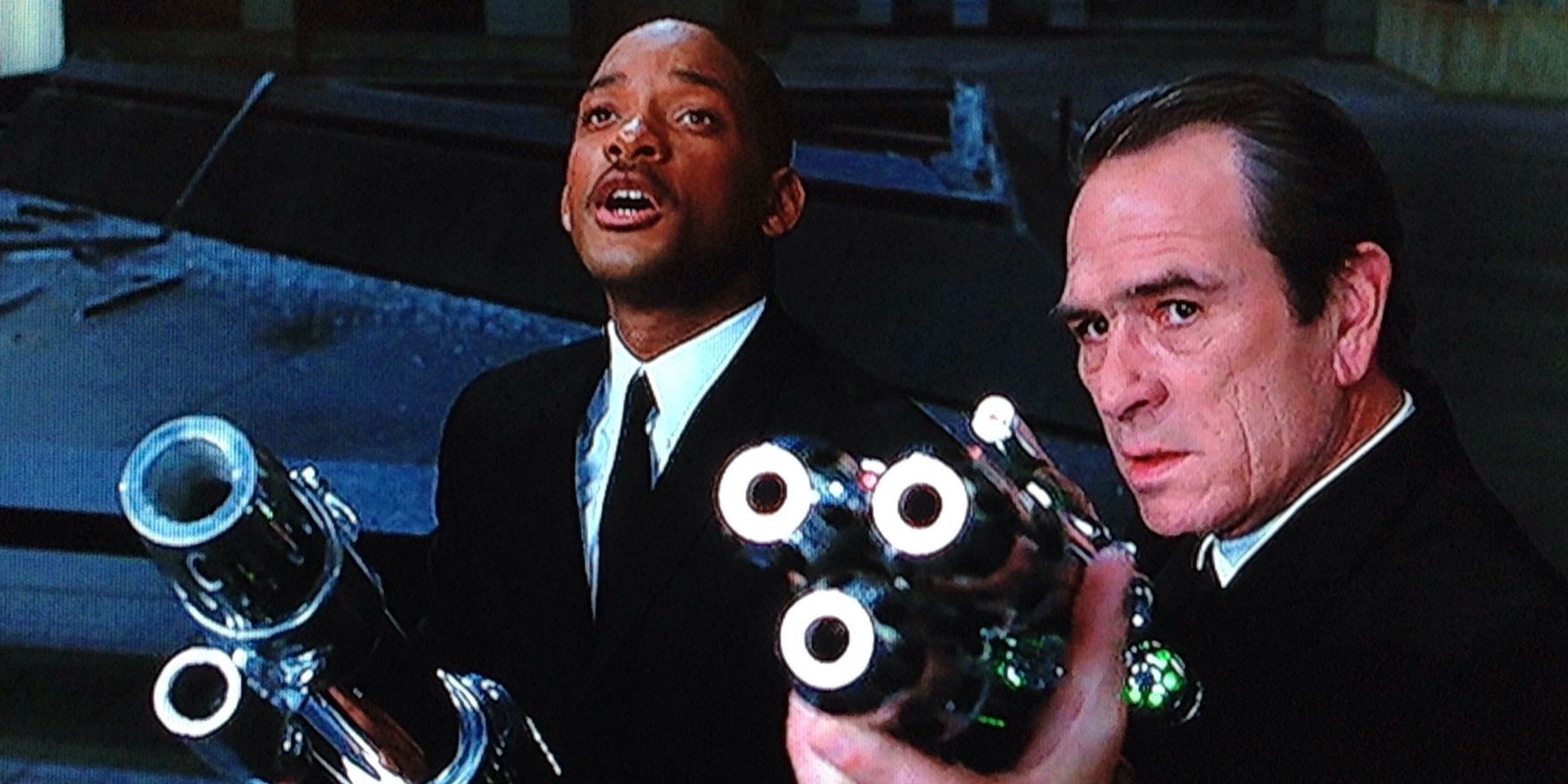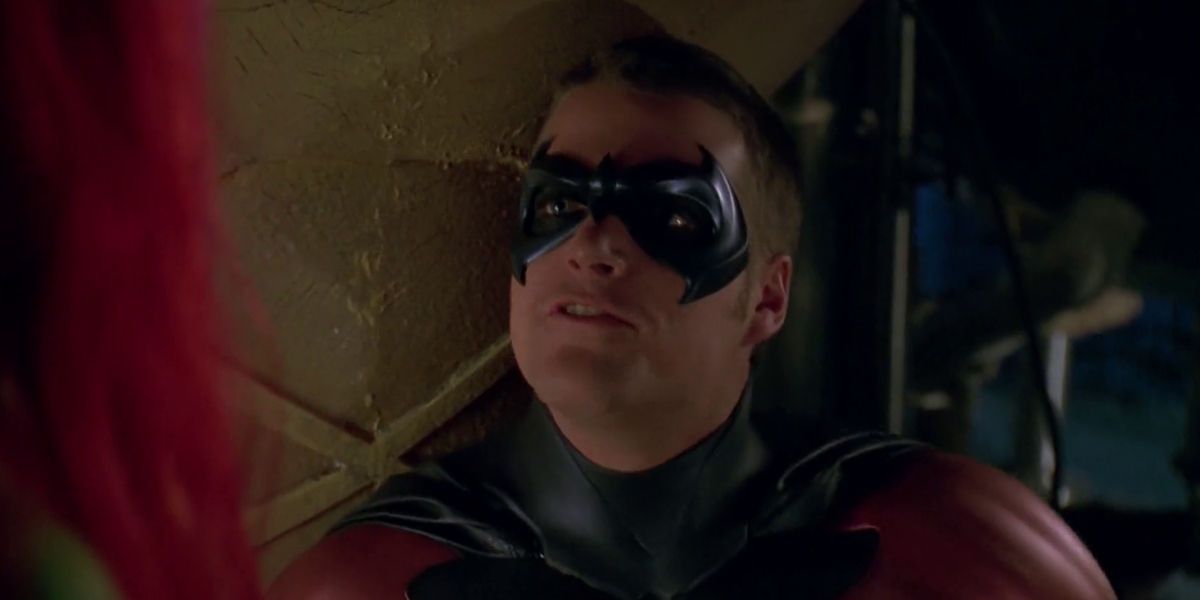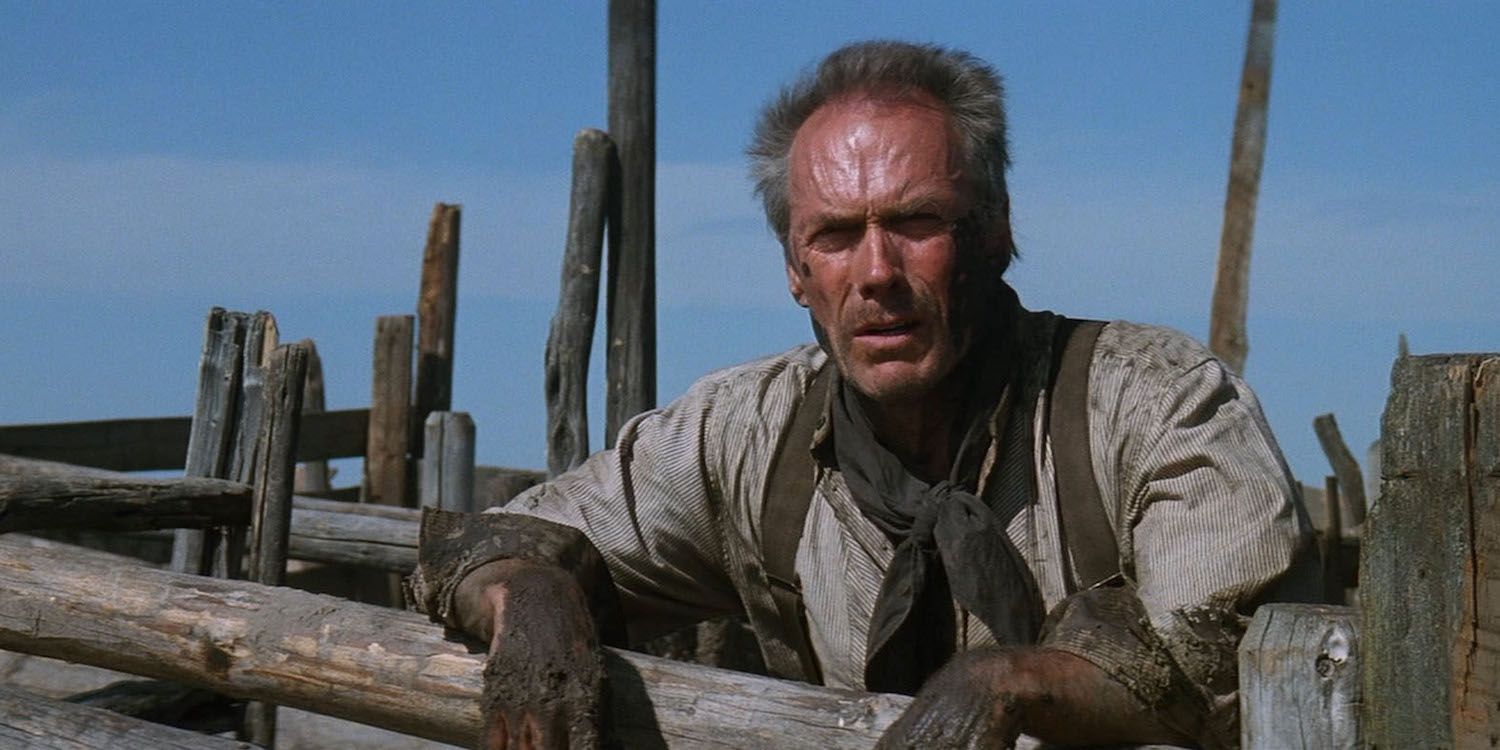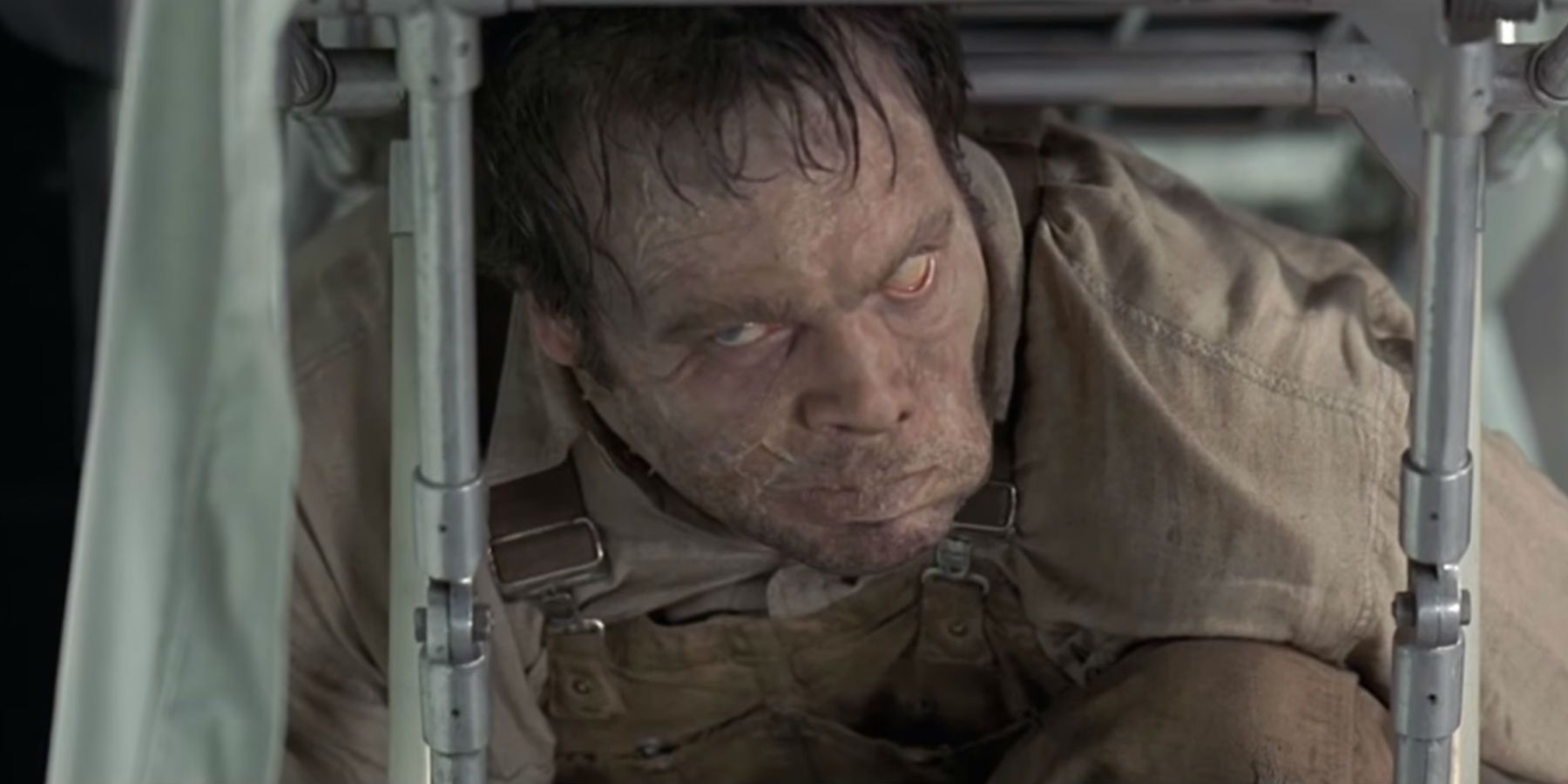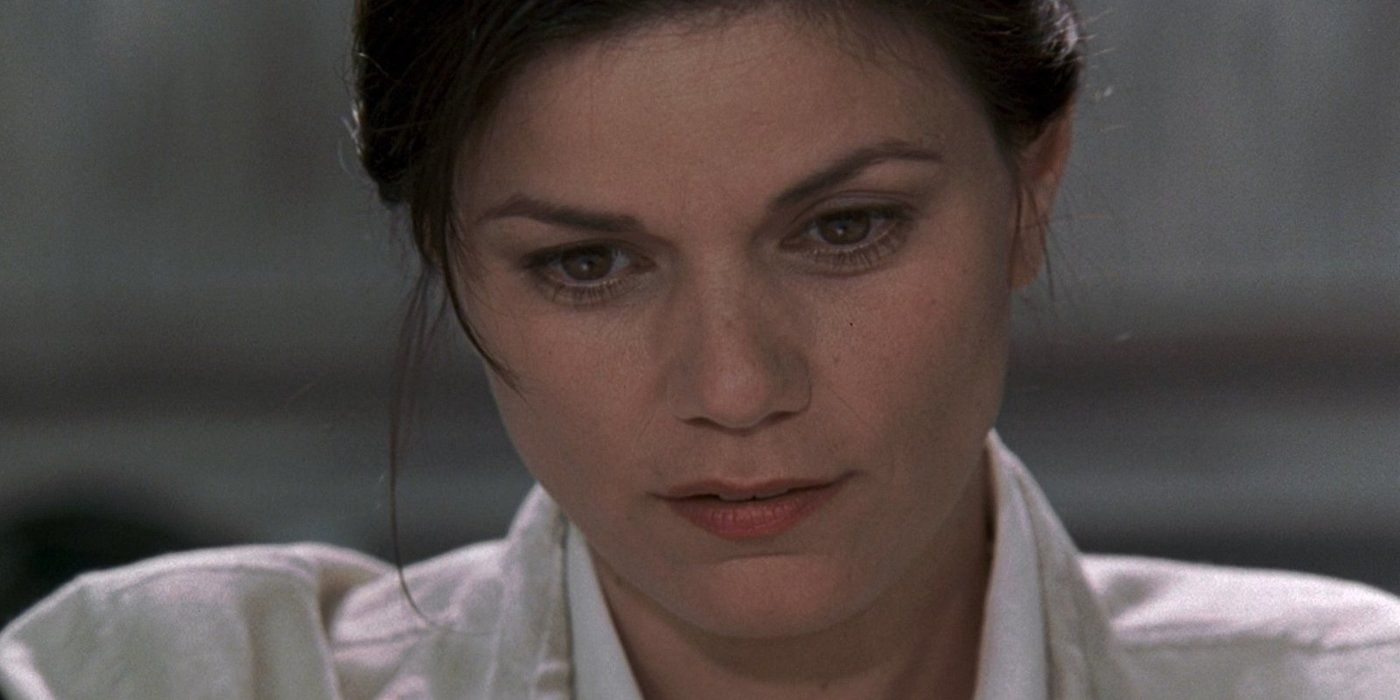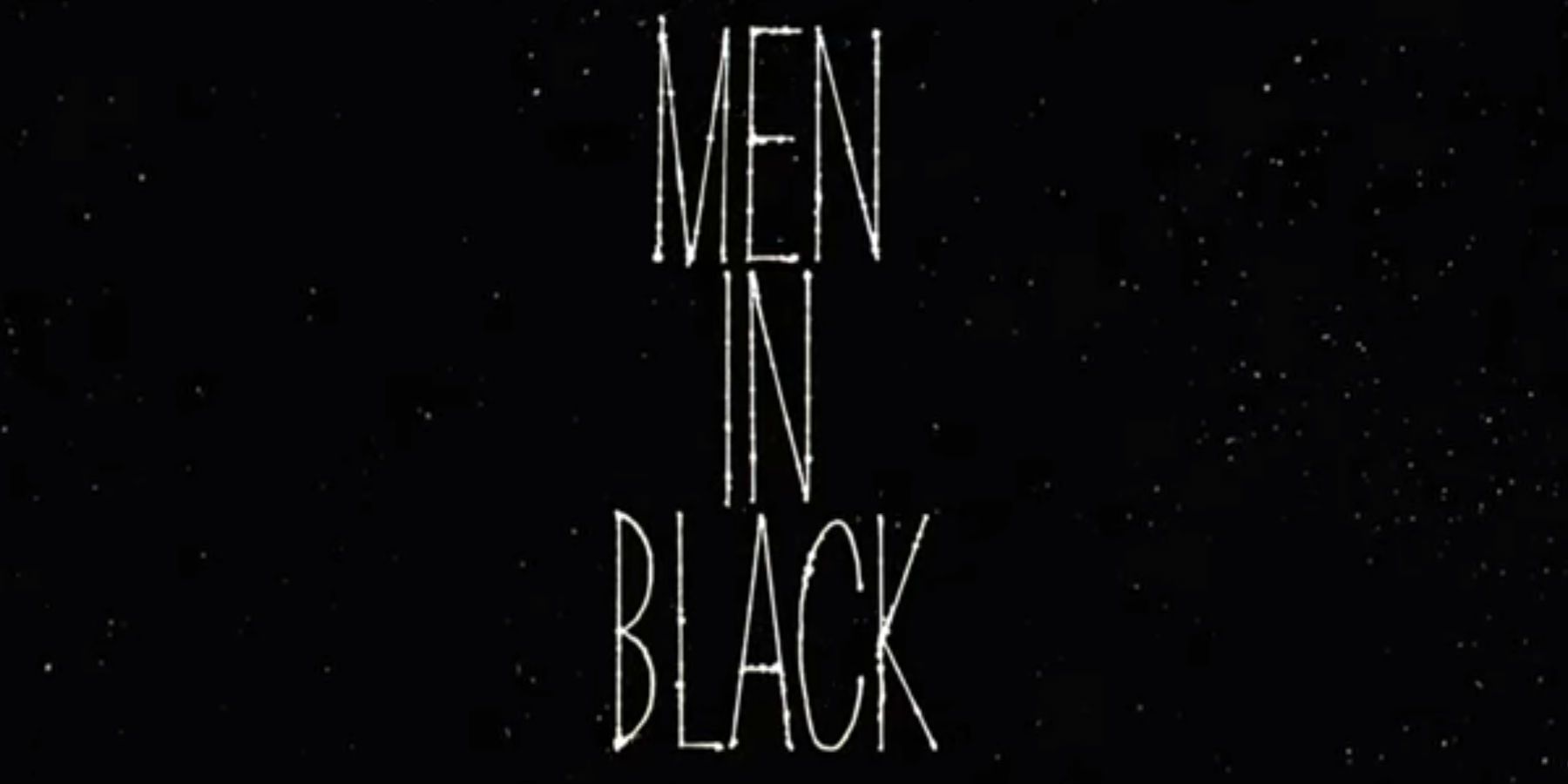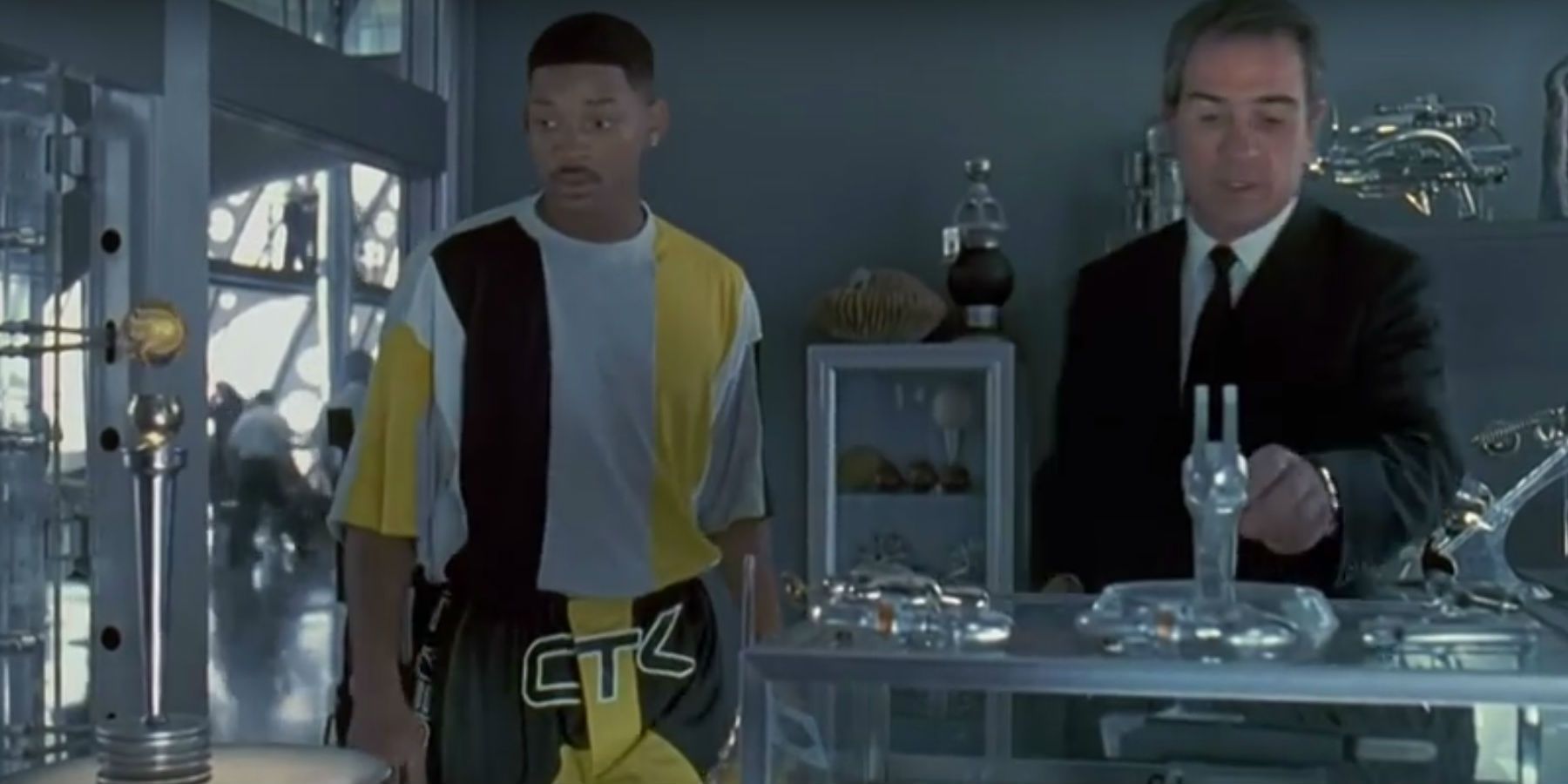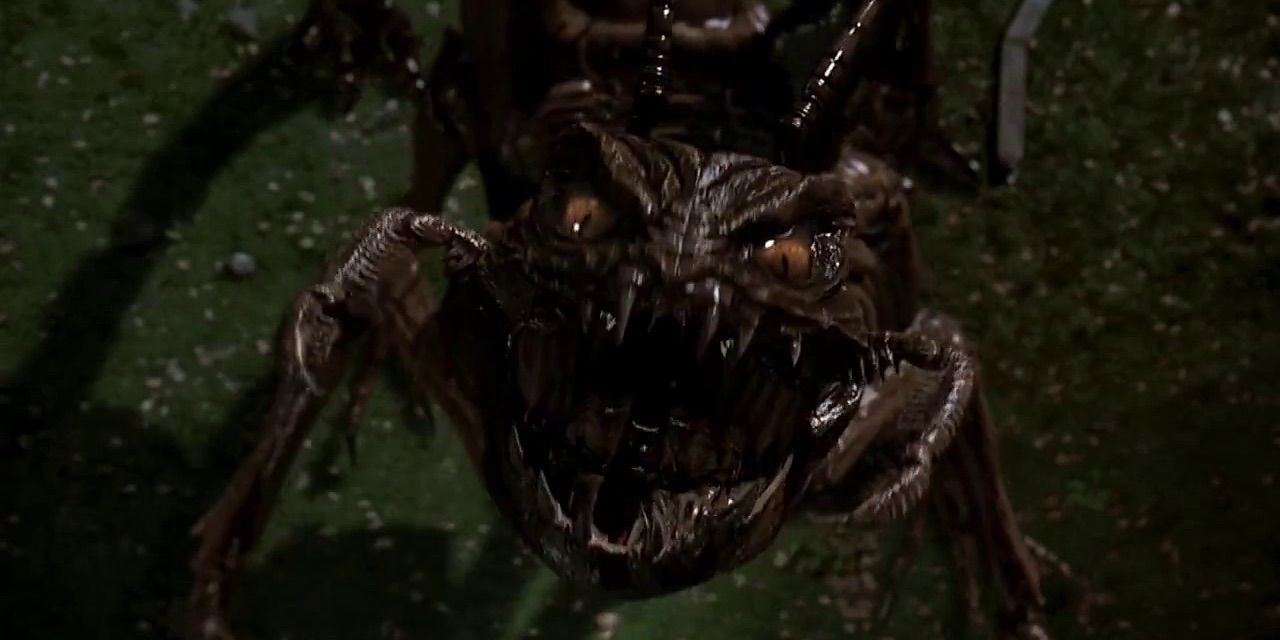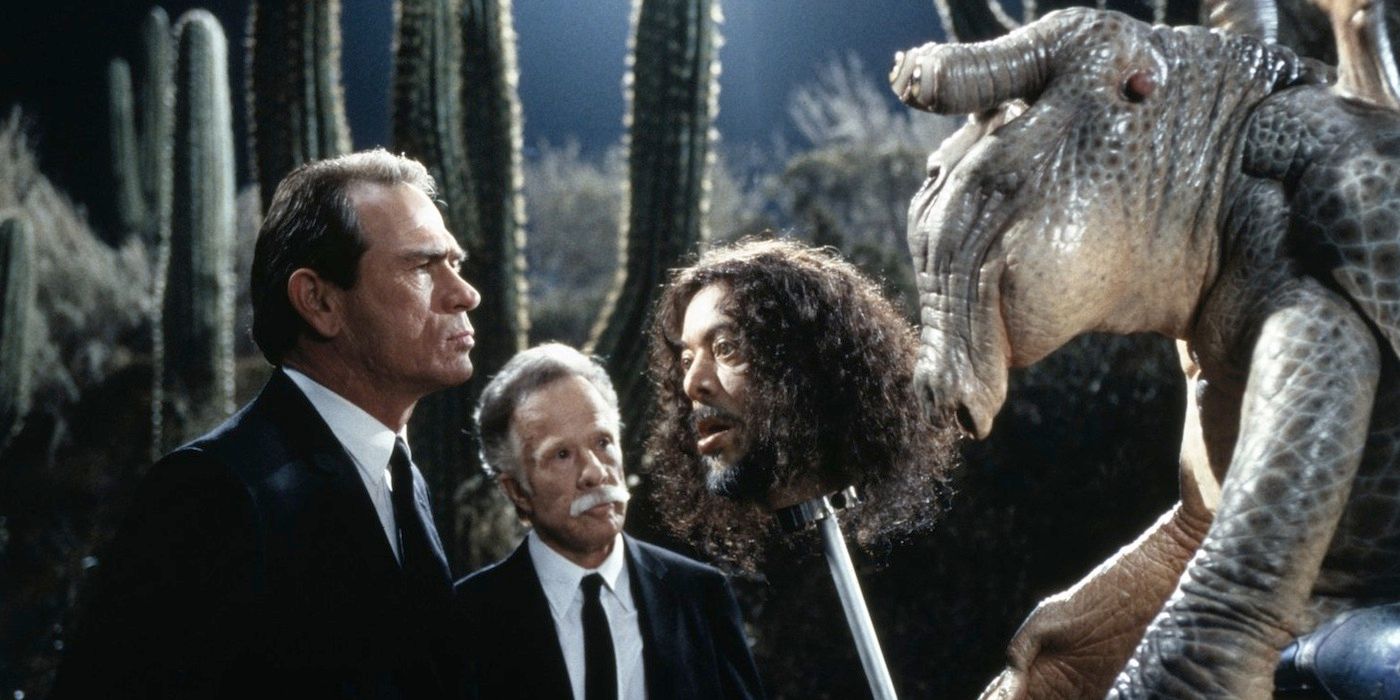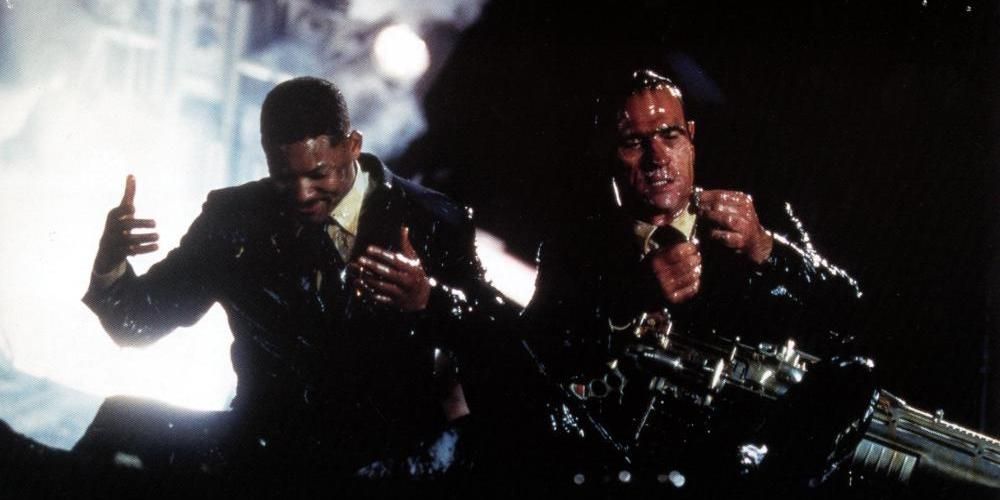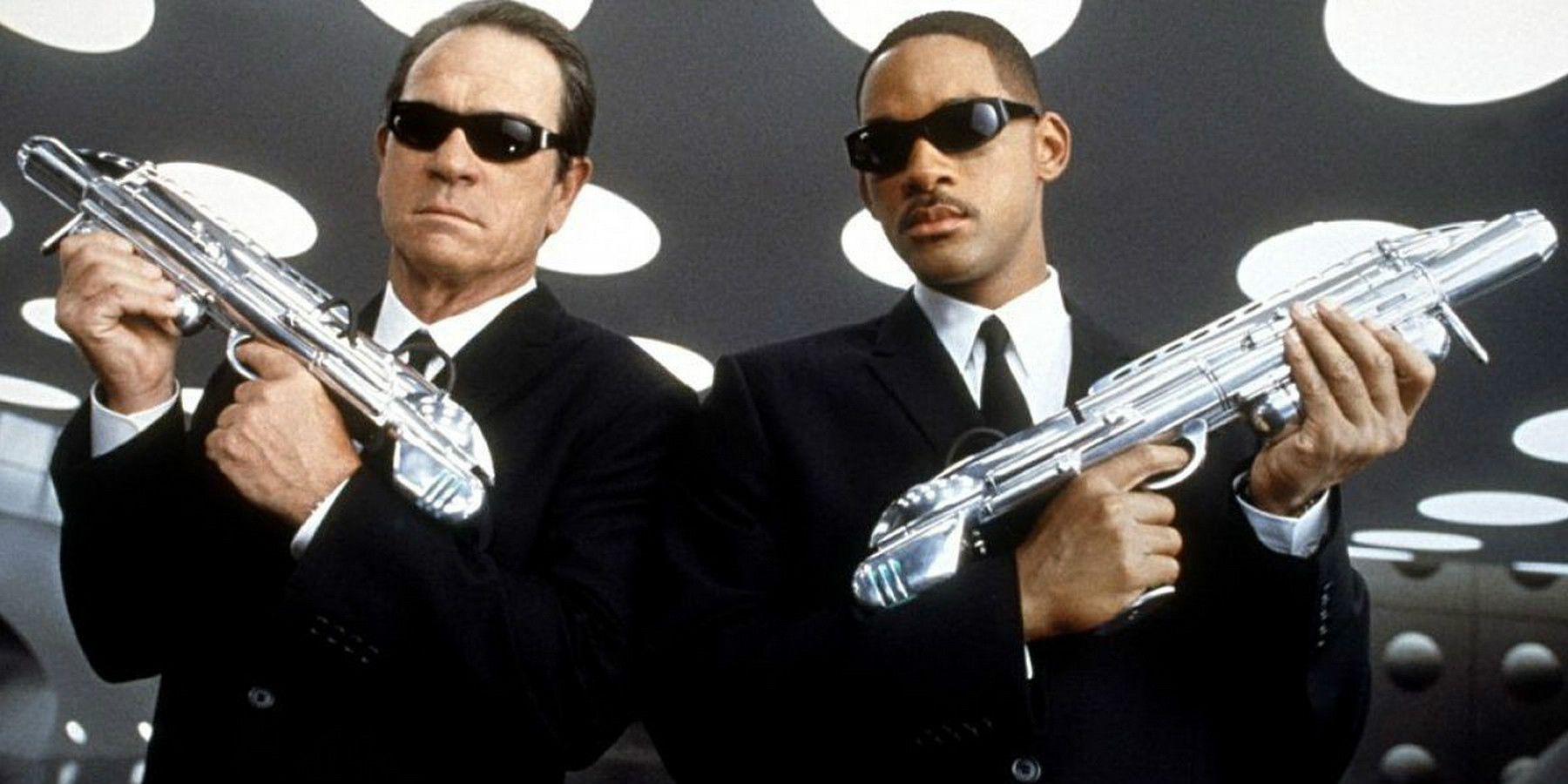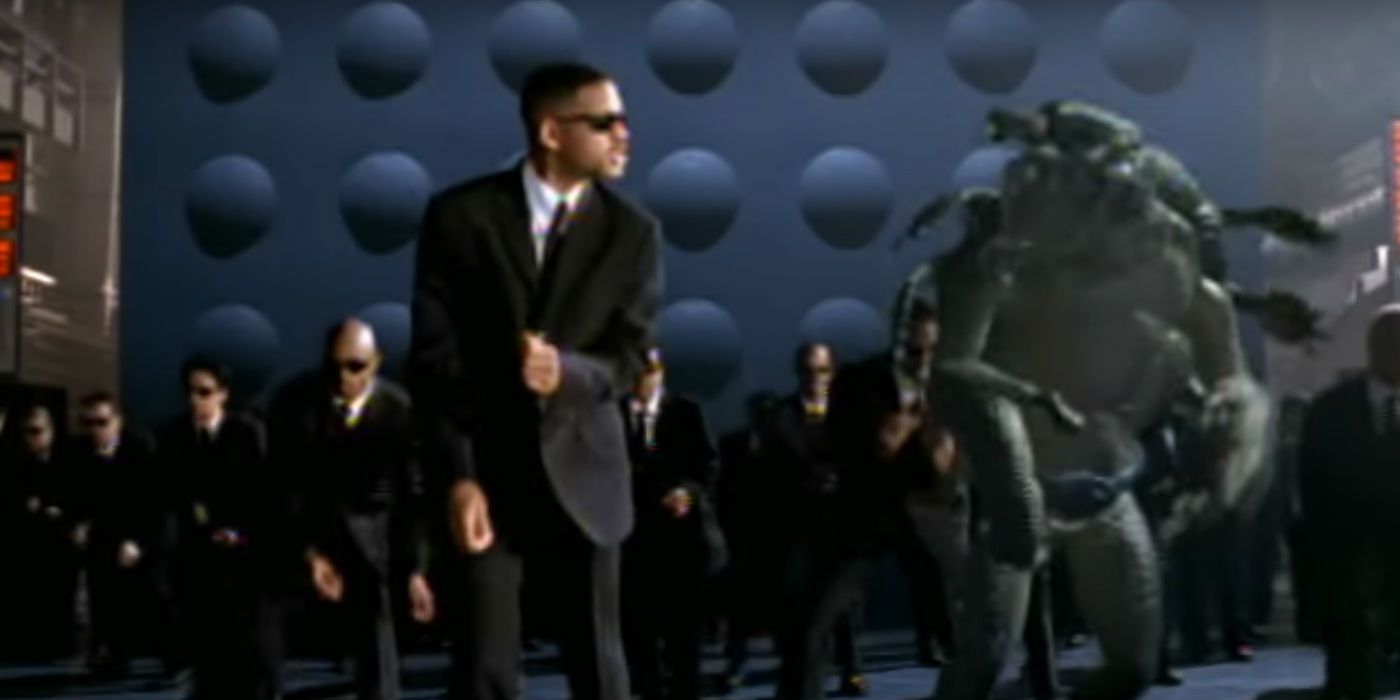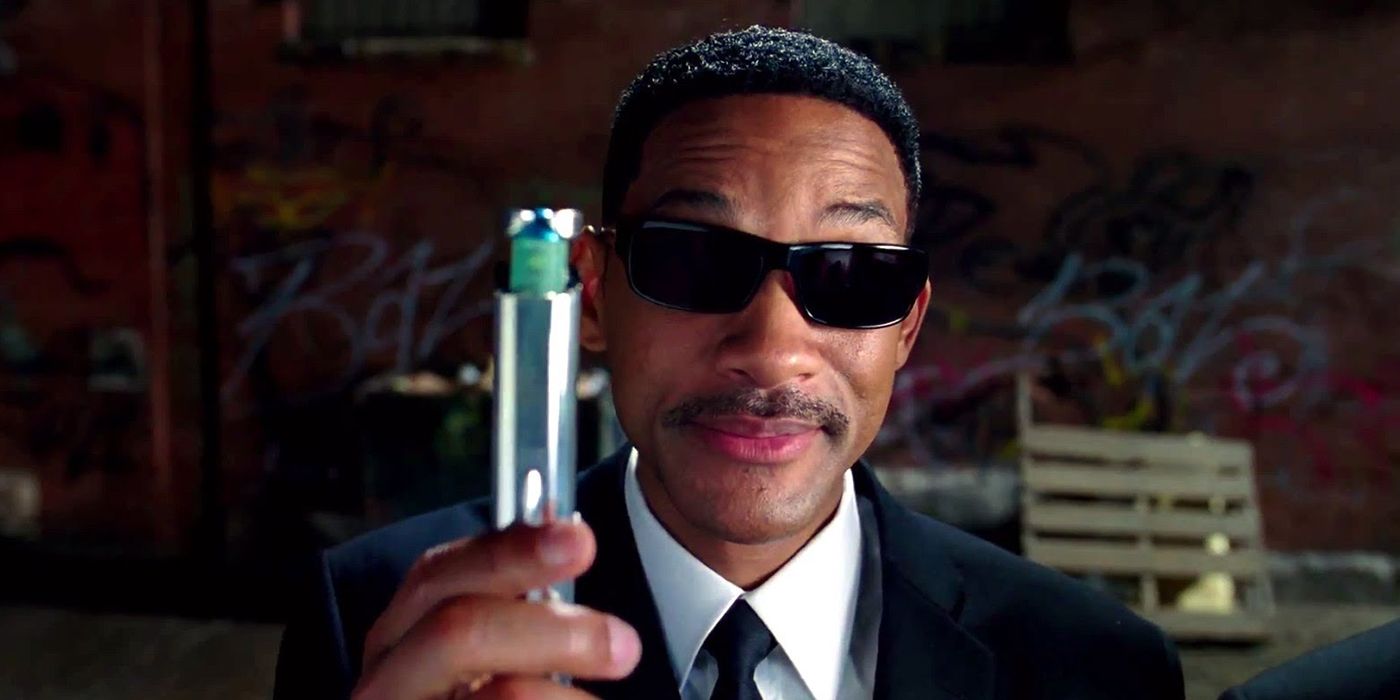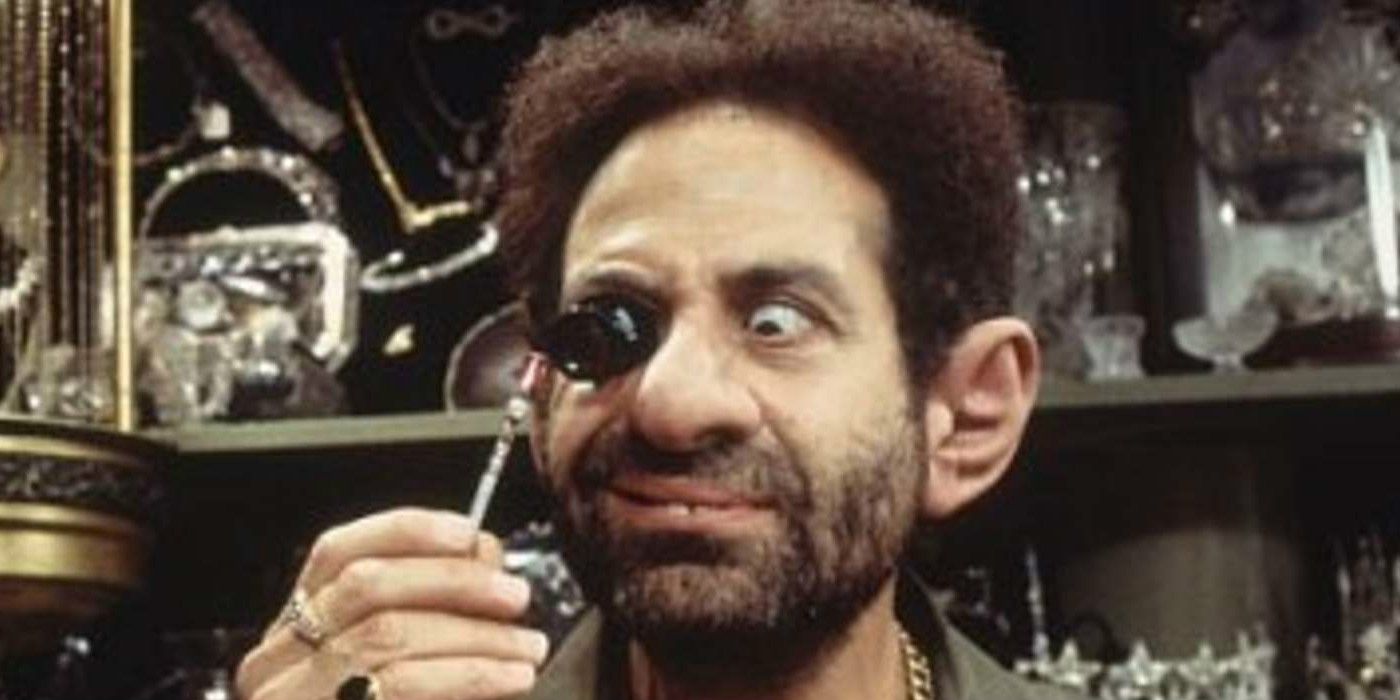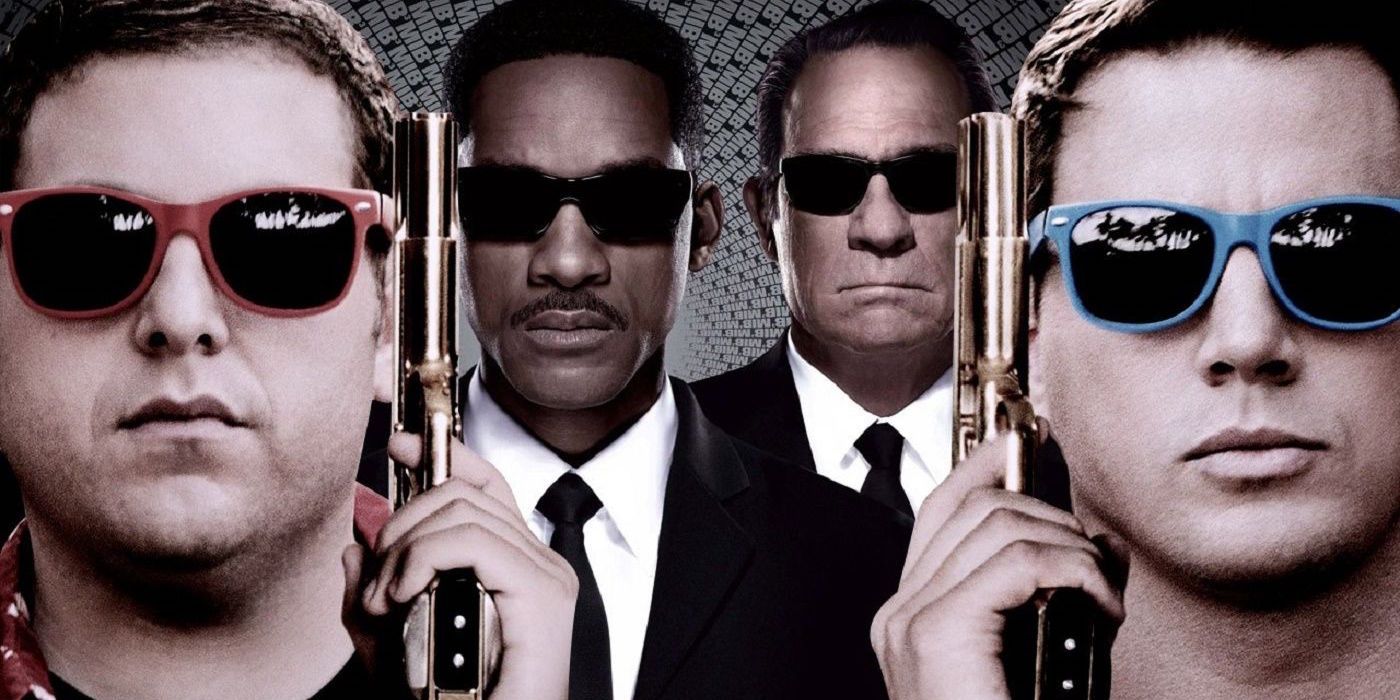If you need any more convincing of how fast time flies, consider the fact that Men in Black turns twenty this summer. Released on July 2, 1997, the movie cemented Will Smith's status as an A-list movie star. Perhaps more impressively, it demonstrated that Tommy Lee Jones can be funny. No easy feat! Based on a comic book written by Lowell Cunningham and illustrated by Sandy Carruthers, it tells the story of two dark suit-wearing secret agents, Jay (Smith) and Kay (Jones), as they attempt to "protect the Earth from the scum of the universe." Their primary enemy is Edgar the Bug (Vincent D'Onofrio), an alien creature who takes on the guise of a farmer in order to wreak havoc.
Funny and exciting in equal measure, MiB spawned two sequels and an animated TV series, and its cultural impact lives on. Two decades later, the movie is every bit as popular as it was in '97. To celebrate the anniversary of this wildly entertaining motion picture, we proudly offer up some facts about it that you may not have known. From alternate casting, to a deleted subplot, to a juicy bit of deception that affected the film's casting, we've got all the scoops. And the best part is that we promise not to use the Neuralizer on you after providing all this top secret information!
Here are 15 Things You Didn't Know About Men In Black.
15. Quentin Tarantino and John Landis were under consideration to direct
The search for a Men in Black director was a precarious task. It required someone who understood the source material and could balance the comedic elements with the sci-fi/action sequences in a way that felt natural. John Landis, who'd shown a knack for genre-blending with his horror-comedy An American Werewolf in London, was approached. He turned it down, feeling it was too similar in tone to other things he'd done. (Landis later acknowledged regretting his decision.) Rumor has it that Quentin Tarantino was also under consideration. We can only imagine what that would have been like.
Eventually, the producers settled on Les Mayfield, who'd made the wacky comedy Encino Man. Mayfield was all set to go, but then, bad reviews poured in for his John Hughes-penned remake of Miracle on 34th Street. That led to some second thoughts for the folks running the show, resulting in his dismissal. Next up was the man who actually got the job, former Coen Brothers cinematographer Barry Sonnenfeld, who'd proven his directorial chops with kooky material via his big screen version of The Addams Family and its sequel. In retrospect, it was a perfect match.
14. The director tricked Chris O'Donnell into not starring
When it came time to cast Men in Black, producer Steven Spielberg had some strong ideas about who should star. Specifically, he wanted Chris O'Donnell in the lead role of Jay. The young actor was hot in Hollywood at that moment, having found success in Scent of a Woman and as Robin in both Batman Forever and Batman and Robin. In a recent interview with The Huffington Post, Sonnenfeld said that Spielberg told him to have dinner with O'Donnell, with the purpose of talking him into taking the part. In fact, while the director liked O'Donnell overall, he really wanted Will Smith for Jay. He therefore sabotaged the dinner meeting, doing the exact opposite of what Spielberg wanted.
Sonnenfeld claims that he insisted to O'Donnell that he wasn't a very good director, that the screenplay wasn't up to snuff, and that it would be better for him to take just about any other project than to sign on for than a certain dud like Men in Black. The gambit worked, as O'Donnell formally passed on the project the next day. Sonnenfeld then made his pitch for Smith as a “replacement.” Spielberg, unaware that he'd been manipulated, gave his blessing to the Fresh Prince.
13. The studio wanted Clint Eastwood for the role of Kay
Everyone involved in the production knew that the chemistry between the two leads would be the make-or-break factor of Men in Black. Whereas Jay was the funny one, Kay needed to be the exact opposite – the straightest of straight-men. A charismatic odd couple could provide real magic that would cause everything to gel. The studio's idea for Kay was Hollywood luminary Clint Eastwood, an actor known for being straightforward, serious, and not at all associated with movies containing any sort of fantasy element.
Sonnenfeld, however, preferred Tommy Lee Jones. He told The Huffington Post that he knew Jones would be “very intimidating.” That's in part because, unlike Eastwood, Jones is infamous for being slightly irascible in real-life. This is, after all, the man whose first words to Jim Carrey when they met to film Batman Forever were (according to Carrey), “I cannot sanction your buffoonery.” Sonnenfeld's instincts were correct, although he says Jones initially didn't like his directorial style, feeling as though he was being asked to be unfunny in a comedy. After he saw the end result, his trust in the filmmaker increased when they made the sequels.
12. Vincent D'Onofrio suffered to play Edgar the Bug
The great Vincent D'Onofrio plays Edgar the Bug, an alien being who kills a simple farmer and hijacks his body in order to carry out his agenda on Earth. D'Onofrio was, and is, largely known as a dramatic actor. His sheer commitment to the role of Edgar is what makes him so funny. Although the role is comical, he took it incredibly seriously, to the point where he literally suffered in order to bring audiences a performance that would make a significant positive contribution to the movie.
For starters, there was the makeup process involved in turning him into Edgar. It took six hours every day to attach all the silk appliances to his face and head. He also had to have his eyelids glued shut all day, according to makeup artist Rick Baker. That still wasn't enough pain for D'Onofrio, however. After watching a few bug documentaries, he felt that Edgar needed a distinct walk, so he wore basketball braces for all his scenes, preventing him from bending his legs. He additionally taped up his ankles, to further impede his ability to walk. It may seem like extreme Method acting, but there's no doubt that it helped make Edgar a memorable villain.
11. Linda Fiorentino "won" her role in a game of poker
Linda Fiorentino had been working in Hollywood for a while, but she didn't really get a ton of notice until her breakout role in John Dahl's 1994 excellent noir thriller The Last Seduction. Critics raved, and the movie became an indie hit. From there, she went on to star opposite David Caruso in Jade and with Bill Murray in the man-and-his-elephant comedy Larger Than Life. It apparently wasn't her past work or her impressive list of costars that got her the job as Laurel Weaver in MiB, though. It was poker.
Although she has never really provided the full specifics, the actress has verified the long-standing rumor that she “won” the role in a poker game, having met Barry Sonnenfeld at a tournament. “By the end of it, I had the job. And I won the game,” she once told an interviewer in 2003. Whatever happened between them during that match clearly convinced the director that she was perfect for the role. Fiorentino also shot down a different rumor, that she wasn't in MiB II because Tommy Lee Jones refused to work with her again. She insists that she was unavailable due to a commitment to another film.
10. It contains references to a cinematic classic and a beloved book series
Men in Black is full of funny moments and general references to the science-fiction genre in its many forms. Some of those references are very specific, yet sail over the heads of some audience members. For starters, the font used in the opening credits was designed by Pablo Ferro, a widely-respected artist. They intentionally replicate the work he did for the credits of Stanley Kubrick's classic comedy Dr. Strangelove: Or How I Learned to Stop Worrying and Love the Bomb. It's a subtle cue that MiB is going to be similarly off-kilter.
Another subtle joke references a beloved literary work. In one scene, Kay estimates that there are more than 1,500 aliens living on Earth, most of them working as cab drivers. This seems like a throwaway line on the surface, but it's actually a nod to Douglas Adams' Hitchhiker's Guide to the Galaxy books. In the fourth installment, So Long and Thanks for All the Fish, the character Ford Prefect writes that cab driving in New York City is a great job for extraterrestrials inhabiting our planet and hoping to escape notice.
9. A key joke is based on a gravitational anomaly
Men in Black has a lot of different kinds of jokes. Some are a bit cerebral, others intentionally lowbrow, still others outright absurd. Then there are the jokes that are so wonky, only a very select number of audience members (or Neil DeGrasse Tyson) will get them. One such joke is based on an actual astronomical phenomenon. If you're not up on your astronomy, you wouldn't even know what the joke meant. The scene involves Jay accidentally launching a small orb around MiB headquarters, where it smashes into things like a rubber ball on crack. Kay tells him the orb is "a practical joke from the Great Attractor."
That's no throwaway line; the Great Attractor is a real gravitational anomaly. Located some 250 million light years away from our planet, it reveals the presence of a mass that is thousands and thousands of times larger than the Milky Way. This mass impacts the motion of galaxies far and wide, including our own. This being the case, the joke of the scene is that this strange entity far, far away from Earth has the ability to cause the orb Jay touches to behave erratically and unpredictably. It's pretty funny, once you know what it means.
8. An animal rights group ensured no cockroaches were harmed
There are all kinds of crazy creatures in the original MiB, including worm guys and, of course, Edgar the Bug. Those are obviously fictional, but other creatures are all too real. One scene employs a slew of cockroaches. Jay, in an effort to get the Bug's attention by agitating him, starts stomping on roaches that have emerged, squishing them under his feet. Whenever animals like dogs, cats, and horses are used in film production, a representative from the American Humane Association is supposed to be on set to make sure they aren't hurt. And guess what? That applies to cockroaches, too!
The AHA's official website breaks down the roach action, then explains in (somewhat humorous) detail how the effects were achieved without harming the critters. Among the tidbits in their report: "Two trainers were inside [a dumpster] releasing thirty roaches through a tube. As a safety precaution, 12" of Plexiglas surrounded the side and back of the dumpster and a 5" sheet was used for a barrier in front of the container." Trainers attached roaches to Will Smith's sleeve using monofiliment line for one shot, and the actor stomped on mustard packets to simulate bug-squashing in another. The Men in Black filmmakers took sufficient care of the icky little co-stars, leading the AHA to grant the movie its "acceptable" rating.
7. An entire subplot was dropped in post-production
For a light sci-fi comedy, Men in Black has a complicated plot. Not complicated like Inception, where you practically need a road map to follow it; complicated in the sense that there is a lot going on. Specifically, at one point, there was a lot of talk about the war between the Arquillians and the Baltians. Oh wait, you don't really remember much about the Baltians? Yeah, there's a reason for that. An entire subplot involving the two alien races' battle, which puts the Earth in jeopardy, was reshaped during the post-production process. The Baltians' presence was cut in order to streamline the plot.
Needless to say, excising a chunk of the story necessitated some creative maneuvering. In order to make the Arquillians Earth's primary threat, a few subtle alterations had to be made to fill in the holes where no-longer-existing references to the Baltians once were. This was accomplished through changing some of Frank the Pug's lines (easy to do, since the talking dog's mouth was computer-generated). Images on computer screens in MiB headquarters were also digitally replaced to eliminate mention of the other alien race. It's a testament to how smoothly the movie made this transition that you can't tell that anything was missing.
6. The ending was reshot at the cost of $4.5 million
It's not unusual for movies to go back for reshoots, especially when they're big-budget summer releases. The studios and filmmakers want to make sure they get things exactly right, so that audiences will have a great time and the film can hopefully make a bundle of money. Many people assume that reshoots indicate trouble, but that's not necessarily true. Sometimes when the movie is assembled in the editing room, it just becomes clear that certain elements could be improved upon. Barry Sonnenfeld, for instance, watched his rough cut of MiB and realized that the finale wasn't as satisfying as it could have been. He needed a do-over.
The original climax featured what was intended to be a comic existential discussion between Jay and the Bug. The director felt that his picture needed a wrap-up that was more action-oriented, as he wanted to send audiences out with a bang. The cast and crew were gathered together to reshoot a new scene that depicted Kay getting swallowed by the Bug, while Jay fought to get his partner back out. This special effects-laden sequence added a whopping $4.5 million to the budget, but, as Sonnenfeld put it, "It was the best $4.5 million we spent." It certainly achieved the desired effect.
5. It was good for the sunglasses industry
As with many hit movies, MiB inspired its fair share of merchandising and tie-ins, like the requisite video games and action figures. Other items were more unusual. There was a roleplaying game from West End Games that was highly regarded, which allowed players to become one of the Men in Black and to take on alien threats to Earth. Universal's Orlando theme park, meanwhile, created an "MiB Alien Attack" ride inspired by the movie, which is still in operation today. From inside a moving cart, patrons can zap more than 120 different aliens with a special laser gun.
It was the Ray-Ban company that really profited the most from the movie, however. Because Jay and Kay wear the company's sunglasses in the film, they became all the rage in 1997. According to reports, the style of shades worn by Will Smith and Tommy Lee Jones saw its sales triple in the wake of the movie's release. Everyone wanted a pair. To this day, the Ray-Ban company manufactures official MiB sunglasses, and they remain a hot seller.
4. Will Smith's music video cost $1 million
Since Will Smith was a rapper as well as an actor, it only made sense to have him record an official MiB theme song. His tune, which shares its name with the movie itself, sampled the hook from Patrice Rushen's 1982 hit “Forget Me Nots.” It was his first smash as a solo artist (i.e. without DJ Jazzy Jeff), going all the way to #1 on the Billboard Hot 100 Airplay chart. Smith additionally won a Grammy for Best Rap Solo Performance for his work.
The accompanying music video was one of the highest-budgeted in history at that time, coming in at a cost of $1 million. Much of the budget was eaten up by an idea that Smith brought with him to the project. He felt that an alien creature known as “Mikey” should dance in the video alongside him. A primitive form of motion capture technology was used to pull this off. The post-production process took three weeks, ultimately giving him an extraterrestrial dance partner that looked convincing. In the end, the video went into near-constant rotation on MTV, helping to generate enthusiasm for the film among the public.
3. It played in theaters longer than most movies do
Movie exhibition has changed over the years. It used to be that flms would open in a small number of theaters, then expand gradually throughout the country if they were successful. That changed in the blockbuster era of the 1980s. Studios routinely started releasing movies wide right away, with an emphasis on breaking opening weekend records whenever possible. As a direct result of this, the landscape became such that many movies started to make as much as half their total box office gross in the first three days. Big openings led to big drops and faster exits from cinemas.
Men in Black bucked that trend in a big way. After an opening weekend haul of $51 million, it continued to maintain its business throughout the summer. You doubtlessly knew that, given that the film was clearly a major hit. What you may not realize, though, is that it played well beyond the summer. In fact, MiB played in theaters for twenty-one weeks, never dropping out of the top twenty. That's five months of theatrical play. It finally closed at Thanksgiving of 1997, having accumulated a total domestic take of $250 million (and nearly $590 million worldwide). It remains the highest-grossing buddy action/comedy in history -- domestically, anyway.
2. It's an Academy Award winner
While not your typical “awards bait,” Men in Black ended up being recognized by several voting bodies. Some you might expect. For instance, the Nickelodeon Kids Choice Awards nominated it for Best Picture and gave Will Smith their patented blimp trophy for Favorite Movie Actor. The MTV Movie Awards also honored MiB with five nominations, including Best Movie. It won Best Fight and Best Movie Song. Even the Golden Globes saw fit to nominate it as Best Motion Picture – Comedy or Musical.
Not too shabby, but sweetening the deal even more was acclaim by the Academy of Motion Picture Arts and Sciences, also known as the group handing out the Oscars. MiB was up in three categories. Danny Elfman's music was included in the category of Best Music, Original Musical or Comedy Score, while Bo Welch and Cheryl Carasik earned noms for Best Art Direction. Men in Black won in its third category, giving Rick Baker and David LeRoy Anderson Oscars for their exemplary makeup work. Despite being a fun summer action movie, the skillful assembly made the industry sit up and take notice.
1. Sony wanted to cross MiB over with 21 Jump Street
The idea of franchise "crossovers" has been around for a while. It's common in comic books, where superheroes appear in each other's stories. Marvel and DC have brought this idea to their feature films, as well. Iron Man pops up in Spider-Man: Homecoming, Batman makes a cameo in Suicide Squad, etc. And who could forget the horror mash-up Freddy vs. Jason? TV shows occasionally do this kind of thing, too. Sony, looking for ways to keep the series going (potentially without stars Will Smith and Tommy Lee Jones), came up with an idea to mix MiB with another successful franchise under their banner, 21 Jump Street.
The project, called MiB 23, would find Jenko (Channing Tatum) and Schmidt (Jonah Hill) somehow teaming up with two all-new Men in Black for a wacky adventure. The idea was first announced at the 2016 CinemaCon in Las Vegas. Phil Lord and Chris Miller -- directors of 21 and 22 Jump Street and, for a while, the Han Solo movie -- signed on as producers, and James Bobbin (The Muppets) was floated as a potential director. There hasn't been any news on the crossover in more than a year, and Hill has gone on record as saying he thinks the complexities of making all the necessary deals will result in the film never getting made. Regardless, it's fun to imagine what this delightfully oddball idea might look like.
--
What's your favorite part of Men in Black? Any special memories of seeing the movie? Let us know in the comments.

